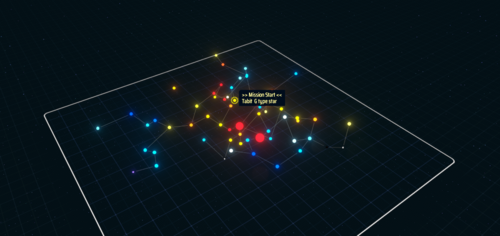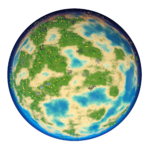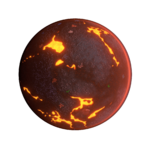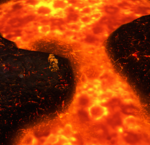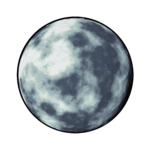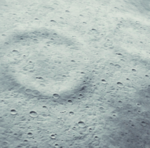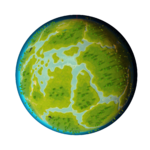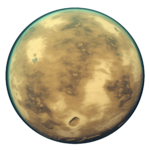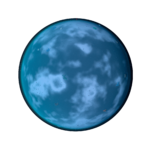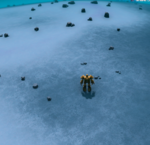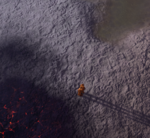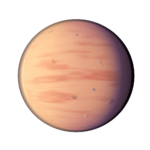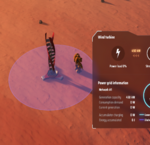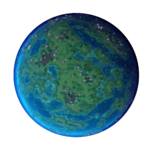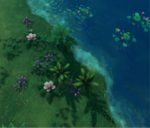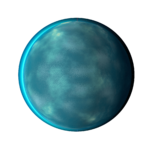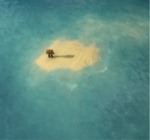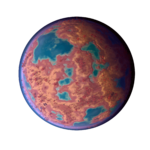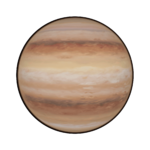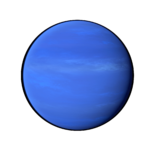imported>76561198067630593 |
imported>76561198067630593 No edit summary |
||
| Line 35: | Line 35: | ||
!Name!!Description!!Image!!Surface view | !Name!!Description!!Image!!Surface view | ||
|- | |- | ||
| | |'''<big>Mediterranean planet<big>''' ||Lush, tropical, and covered with oceans, they're abundant with basic resources. There is only one of these planet types in the cluster. It is the player's starter home planet. They're also a great source of [[Crude_Oil|crude oil]]. | ||
'''<big>Mediterranean planet<big>''' ||Lush, tropical, and covered with oceans, they're abundant with basic resources. There is only one of these planet types in the cluster. It is the player's starter home planet. They're also a great source of [[Crude_Oil|crude oil]].||[[File:Mediterainean planet view.PNG|150px|center|link=Special:FilePath/Mediterainean_planet_view.PNG]]|| | || | ||
[[File:Mediterainean planet view.PNG|150px|center|link=Special:FilePath/Mediterainean_planet_view.PNG]] | |||
|| | |||
|- | |- | ||
|'''<big>Lava planet<big>''' || Inhospitable, covered with lava lakes, they usually contain [[Silicon_Ore|silicon ore]] and [[Titanium_Ore|titanium ore]].||[[File:Lava planet view.PNG|150px|center]]||[[File:Lava planet surface.png|150px|center]] | |'''<big>Lava planet<big>''' ||Inhospitable, covered with lava lakes, they usually contain [[Silicon_Ore|silicon ore]] and [[Titanium_Ore|titanium ore]].||[[File:Lava planet view.PNG|150px|center]]||[[File:Lava planet surface.png|150px|center]] | ||
|- | |- | ||
|'''<big>Barren planet<big>''' ||Similar to the moon, its surface is covered with craters, since there's no atmosphere, [[Wind_Turbine|wind turbines]] are useless, there are no oceans either, but it has the biggest construction area, and can be a decent source for [[Soil_Pile|soil piles]]. ||[[File:Barren Desert planet view.PNG|150px|center|link=Special:FilePath/Barren_Desert_planet_view.PNG]]||[[File:Barren planet surface.png|150px|center]] | |'''<big>Barren planet<big>''' ||Similar to the moon, its surface is covered with craters, since there's no atmosphere, [[Wind_Turbine|wind turbines]] are useless, there are no oceans either, but it has the biggest construction area, and can be a decent source for [[Soil_Pile|soil piles]].||[[File:Barren Desert planet view.PNG|150px|center|link=Special:FilePath/Barren_Desert_planet_view.PNG]]||[[File:Barren planet surface.png|150px|center]] | ||
|- | |- | ||
|'''<big>Prairie planet<big>''' ||Similar to mediterranean planets, they're habitable lush oceanic planets, has less oceans, and more grasslands. They're also a good source of [[Crude_Oil|crude oil]]. [[Organic_Crystal|Organic crystal veins]] can also be found there.|| | |'''<big>Prairie planet<big>''' ||Similar to mediterranean planets, they're habitable lush oceanic planets, has less oceans, and more grasslands. They're also a good source of [[Crude_Oil|crude oil]]. [[Organic_Crystal|Organic crystal veins]] can also be found there.|| | ||
| Line 47: | Line 49: | ||
[[File:Prairie planet surface.png|150px|center]] | [[File:Prairie planet surface.png|150px|center]] | ||
|- | |- | ||
|'''<big>Gobi desert planet<big>''' || Another planet fully devoid of any life or water, but does contain mountains, so they're a great source for [[Soil_Pile|soil piles]].|| | |'''<big>Gobi desert planet<big>''' ||Another planet fully devoid of any life or water, but does contain mountains, so they're a great source for [[Soil_Pile|soil piles]].|| | ||
[[File:Gobi planet view.PNG|150px|center|link=Special:FilePath/Gobi_planet_view.PNG]] | [[File:Gobi planet view.PNG|150px|center|link=Special:FilePath/Gobi_planet_view.PNG]] | ||
|| | || | ||
| Line 64: | Line 66: | ||
|'''<big>Arid desert<big>''' ||Another desert planet, but compared to others, these planets are a great source for capturing [[Wind_Turbine|wind energy]].|| | |'''<big>Arid desert<big>''' ||Another desert planet, but compared to others, these planets are a great source for capturing [[Wind_Turbine|wind energy]].|| | ||
[[File:Arid planet view.PNG|150px|center|link=Special:FilePath/Arid planet view.PNG]] | [[File:Arid planet view.PNG|150px|center|link=Special:FilePath/Arid planet view.PNG]] | ||
|| | || | ||
[[File:Arid desert planet surface.png|150px|center]] | [[File:Arid desert planet surface.png|150px|center]] | ||
|- | |- | ||
|'''<big>Ice planet<big>''' ||Planets covered with ice, and may have pockets of water scattered around the surface, veins of [[Fire_Ice|fire ice]] can be found around such planets. Since they're usually far away from their orbiting star, and have no atmosphere, they're terrible sources for renewable energy, the use of [[Thermal_Power_Station|thermal power stations]] is recommended.|| | |'''<big>Ice planet<big>''' ||Planets covered with ice, and may have pockets of water scattered around the surface, veins of [[Fire_Ice|fire ice]] can be found around such planets. Since they're usually far away from their orbiting star, and have no atmosphere, they're terrible sources for renewable energy, the use of [[Thermal_Power_Station|thermal power stations]] is recommended.|| | ||
[[File:Ice Field Gelisol planet view.PNG|150px|center|link=Special:FilePath/Ice_Field_Gelisol_planet_view.PNG]] | [[File:Ice Field Gelisol planet view.PNG|150px|center|link=Special:FilePath/Ice_Field_Gelisol_planet_view.PNG]] | ||
|| | || | ||
[[File:Ice planet surface.png|150px|center|link=Special:FilePath/Ice_planet_surface.png]] | [[File:Ice planet surface.png|150px|center|link=Special:FilePath/Ice_planet_surface.png]] | ||
|- | |- | ||
|'''<big>Oceanic jungle planet<big>''' ||Similar to Mediterranean and Prairie planets, they're lush planets, and they commonly contain sources of [[Spiniform_Stalagmite_Crystal|spiniform stalagmite crystals]], [[Crude_Oil|crude oil]], and [[Organic_Crystal|organic crystals]]. || | |'''<big>Oceanic jungle planet<big>''' ||Similar to Mediterranean and Prairie planets, they're lush planets, and they commonly contain sources of [[Spiniform_Stalagmite_Crystal|spiniform stalagmite crystals]], [[Crude_Oil|crude oil]], and [[Organic_Crystal|organic crystals]].|| | ||
[[File:Oceanic Jungle planet view.PNG|150px|center|link=Special:FilePath/Oceanic_Jungle_planet_view.PNG]] | [[File:Oceanic Jungle planet view.PNG|150px|center|link=Special:FilePath/Oceanic_Jungle_planet_view.PNG]] | ||
|| | || | ||
[[File:Jungle planet surface.png|150px|center]] | [[File:Jungle planet surface.png|150px|center]] | ||
|- | |- | ||
|'''<big>Oceanic planet<big>''' ||almost entirelly covered with oceans, it's very impractical to construct any infrastructure on it. It's another source of [[Spiniform_Stalagmite_Crystal|spiniform stalagmite crystals]], but it's highly recommended you bring [[Foundation|foundations]] and plenty of [[Soil_Pile|soil piles]] before you have anything to do with such planets.|| | |'''<big>Oceanic planet<big>''' || almost entirelly covered with oceans, it's very impractical to construct any infrastructure on it. It's another source of [[Spiniform_Stalagmite_Crystal|spiniform stalagmite crystals]], but it's highly recommended you bring [[Foundation|foundations]] and plenty of [[Soil_Pile|soil piles]] before you have anything to do with such planets.|| | ||
[[File:Ocean planet view.PNG|150px|center|link=Special:FilePath/Ocean_planet_view.PNG]] | [[File:Ocean planet view.PNG|150px|center|link=Special:FilePath/Ocean_planet_view.PNG]] | ||
|| | || | ||
[[File:Ocean planet surface.png|150px|center]] | [[File:Ocean planet surface.png|150px|center]] | ||
|- | |- | ||
|'''<big>Red mushroom planet<big>''' ||Similar to Mediterranean planets, but the soil is more reddish, and the surface is covered with mushrooms. || | |'''<big>Red mushroom planet<big>''' ||Similar to Mediterranean planets, but the soil is more reddish, and the surface is covered with mushrooms.|| | ||
[[File:Red Stone planet view.PNG|150px|center|link=Special:FilePath/Red_Stone_planet_view.PNG]] | [[File:Red Stone planet view.PNG|150px|center|link=Special:FilePath/Red_Stone_planet_view.PNG]] | ||
|| | || | ||
| Line 106: | Line 108: | ||
|+ | |+ | ||
|- | |- | ||
!Name!!Description!! Image | !Name!!Description!!Image | ||
|- | |- | ||
|'''<big>Class M star<big>''' ||The most abundant class of star is M, however, its luminosity is very low, making it very impractical to construct dyson spheres around them.||[[File:M type star.png|150px|M type star]] | |'''<big>Class M star<big>''' ||The most abundant class of star is M, however, its luminosity is very low, making it very impractical to construct dyson spheres around them.||[[File:M type star.png|150px|M type star]] | ||
| Line 122: | Line 124: | ||
|'''<big>Class O star<big>'''||The brightest star type, ideal for constructing [[Dyson_Sphere|dyson spheres]] around them. However, they also tend to be the largest, and so require more materials to do so.||[[File:O type star.png|150px|O type star]] | |'''<big>Class O star<big>'''||The brightest star type, ideal for constructing [[Dyson_Sphere|dyson spheres]] around them. However, they also tend to be the largest, and so require more materials to do so.||[[File:O type star.png|150px|O type star]] | ||
|- | |- | ||
|'''<big>Giant star<big>'''|| Can be of any spectral class that main sequence stars belong to. Giants are >10R⊙ and have higher luminosity than their main sequence counterparts. Depending on spectral class, they are referred to as Red, Yellow, White and Blue giants.||[[File:Red giant.png|150px|Red giant]] | |'''<big>Giant star<big>'''||Can be of any spectral class that main sequence stars belong to. Giants are >10R⊙ and have higher luminosity than their main sequence counterparts. Depending on spectral class, they are referred to as Red, Yellow, White and Blue giants.||[[File:Red giant.png|150px|Red giant]] | ||
|- | |- | ||
|'''<big>Neutron star<big>'''||One of the rarest stars, [[Unipolar_Magnet#Used_In|unipolar magnets]] are commonly found on host planets orbiting such stars.||[[File:Neutron star.png|150px|Neutron star]] | |'''<big>Neutron star<big>'''|| One of the rarest stars, [[Unipolar_Magnet#Used_In|unipolar magnets]] are commonly found on host planets orbiting such stars.||[[File:Neutron star.png|150px|Neutron star]] | ||
|- | |- | ||
|'''<big>White dwarf<big>'''|| ||[[File:White dwarf.png|150px|White dwarf]] | |'''<big>White dwarf<big>'''|| ||[[File:White dwarf.png|150px|White dwarf]] | ||
|- | |- | ||
|'''<big>Black hole<big>'''||A dead star, it's the only other source of [[Unipolar_Magnet#Used_In|unipolar magnets]] aside from neutron stars.||[[File:Black hole.png|150px|Black hole]] | |'''<big>Black hole<big>'''|| A dead star, it's the only other source of [[Unipolar_Magnet#Used_In|unipolar magnets]] aside from neutron stars.||[[File:Black hole.png|150px|Black hole]] | ||
|} | |} | ||
==Sources of rare veins== | ==Sources of rare veins == | ||
{| class="wikitable" | {| class="wikitable" | ||
|+List of where you might find rare veins, please note that the starter planet is an exemption of this list. | |+List of where you might find rare veins, please note that the starter planet is an exemption of this list. | ||
| Line 147: | Line 149: | ||
|{{RecipeItem|ItemName=Kimberlite Ore|ItemCount=}}||Commonly found on red mushroom planets. | |{{RecipeItem|ItemName=Kimberlite Ore|ItemCount=}}||Commonly found on red mushroom planets. | ||
|- | |- | ||
|{{RecipeItem|ItemName=Fractal Silicon|ItemCount=}}|| Commonly found on freezing planets (ashen gelisol and ice planets). | |{{RecipeItem|ItemName=Fractal Silicon|ItemCount=}}||Commonly found on freezing planets (ashen gelisol and ice planets). | ||
|- | |- | ||
|{{RecipeItem|ItemName=Unipolar Magnet|ItemCount=}}||Only found on planets orbiting neutron stars or black holes. | |{{RecipeItem|ItemName=Unipolar Magnet|ItemCount=}}||Only found on planets orbiting neutron stars or black holes. | ||
| Line 166: | Line 168: | ||
!Name!!Description!!Image | !Name!!Description!!Image | ||
|- | |- | ||
|'''<big>Tidal locking (TL)<big>''' || Planets that has the same rotational period as orbital period, and consequently has one side permanently facing its host star or planet. Very useful to capture the host star's energy via [[Solar_Panel|solar panels]] and/or [[Ray_Receiver|ray receivers]]|| | |'''<big>Tidal locking (TL)<big>''' ||Planets that has the same rotational period as orbital period, and consequently has one side permanently facing its host star or planet. Very useful to capture the host star's energy via [[Solar_Panel|solar panels]] and/or [[Ray_Receiver|ray receivers]]|| | ||
|- | |- | ||
|'''<big>Sattelite (SAT)<big>''' ||Astronomical objects that orbit another object that isn't a star, or in simpler terms, a moon. The starter planet is one example of such object. However, building [[EM-Rail_Ejector|EM-rail ejectors]] would be problematic, as the orbiting parent can block the sun, rendering them useless until the orbiting object passes, this decreases the time the [[EM-Rail_Ejector|EM-rail ejectors]] can fire sails, and decreases their effeciency.|| | |'''<big>Sattelite (SAT)<big>''' ||Astronomical objects that orbit another object that isn't a star, or in simpler terms, a moon. The starter planet is one example of such object. However, building [[EM-Rail_Ejector|EM-rail ejectors]] would be problematic, as the orbiting parent can block the sun, rendering them useless until the orbiting object passes, this decreases the time the [[EM-Rail_Ejector|EM-rail ejectors]] can fire sails, and decreases their effeciency.|| | ||
Revision as of 18:33, 25 February 2021
Summary
There are many types of stars and planets, each of which has their own advantage, and disadvantages in terms of gameplay value. This page is dedicated to categorize all astronomical objects and phenomena, and describe them.
When picking a star to construct a dyson sphere around, it's highly recommended to do it around a star with the highest luminosity (L☉), as many stars can have more than double (~2 L☉) if not triple (~3 L☉) the energy output than the starter system's star (~1 L☉), which is much less time consuming, and more effective than building one or even two additional dyson spheres orbiting neighboring stars.
Some rare veins and ores can only be found on certain types of planets, but on the other hand, it can also be impossible for those materials to naturally occur in other planets.
Types of planets
According to this reddit post, all terrestrial planets appear to follow the same grid layout:
5x20 (Including the pole, forms a 9 diameter disk around the pole)
5x40
5x80
5x100
10x160
10x200
15x300
15x400
25x500
25x600
50x800
80x1000
Equator (1x1000)
When building on a seam between the different bands, buildings will snap to the band closest to the equator.
| Name | Description | Image | Surface view |
|---|---|---|---|
| Mediterranean planet | Lush, tropical, and covered with oceans, they're abundant with basic resources. There is only one of these planet types in the cluster. It is the player's starter home planet. They're also a great source of crude oil. | ||
| Lava planet | Inhospitable, covered with lava lakes, they usually contain silicon ore and titanium ore. | ||
| Barren planet | Similar to the moon, its surface is covered with craters, since there's no atmosphere, wind turbines are useless, there are no oceans either, but it has the biggest construction area, and can be a decent source for soil piles. | ||
| Prairie planet | Similar to mediterranean planets, they're habitable lush oceanic planets, has less oceans, and more grasslands. They're also a good source of crude oil. Organic crystal veins can also be found there. | ||
| Gobi desert planet | Another planet fully devoid of any life or water, but does contain mountains, so they're a great source for soil piles. | ||
| Ashen gelisol planet | Similar to a Gobi desert planet, it's fully devoid of anything, but this time a frozen one. | ||
| Volcanic ash planet | Similar to a lava planet, it's devoid of anything but volcanic activity, however, these planets are also a great source of sulfuric acid, and oceans of such are found around such planets. | ||
| Arid desert | Another desert planet, but compared to others, these planets are a great source for capturing wind energy. | ||
| Ice planet | Planets covered with ice, and may have pockets of water scattered around the surface, veins of fire ice can be found around such planets. Since they're usually far away from their orbiting star, and have no atmosphere, they're terrible sources for renewable energy, the use of thermal power stations is recommended. | ||
| Oceanic jungle planet | Similar to Mediterranean and Prairie planets, they're lush planets, and they commonly contain sources of spiniform stalagmite crystals, crude oil, and organic crystals. | ||
| Oceanic planet | almost entirelly covered with oceans, it's very impractical to construct any infrastructure on it. It's another source of spiniform stalagmite crystals, but it's highly recommended you bring foundations and plenty of soil piles before you have anything to do with such planets. | ||
| Red mushroom planet | Similar to Mediterranean planets, but the soil is more reddish, and the surface is covered with mushrooms. | ||
| Gas Giant | Gas giants are commonly found around the universe, and are a good source of deuterium and hydrogen by using orbit collectors | ||
| Ice Giant | Ice giants are less commonly found around the universe, but are a good source of fire ice and hydrogen by using orbit collectors | ||
Stellar objects
| Name | Description | Image |
|---|---|---|
| Class M star | The most abundant class of star is M, however, its luminosity is very low, making it very impractical to construct dyson spheres around them. | 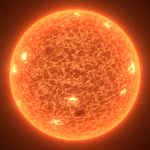 |
| Class K star | 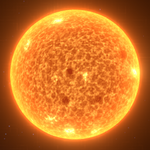 | |
| Class G star | 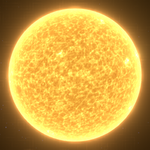 | |
| Class F star | 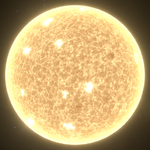 | |
| Class A star | 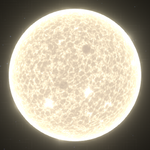 | |
| Class B star | 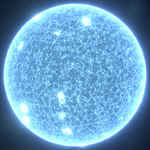 | |
| Class O star | The brightest star type, ideal for constructing dyson spheres around them. However, they also tend to be the largest, and so require more materials to do so. | 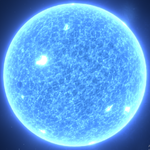 |
| Giant star | Can be of any spectral class that main sequence stars belong to. Giants are >10R⊙ and have higher luminosity than their main sequence counterparts. Depending on spectral class, they are referred to as Red, Yellow, White and Blue giants. | 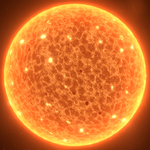 |
| Neutron star | One of the rarest stars, unipolar magnets are commonly found on host planets orbiting such stars. | 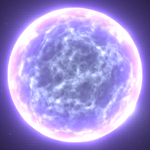 |
| White dwarf | 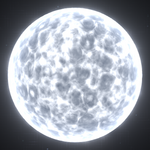 | |
| Black hole | A dead star, it's the only other source of unipolar magnets aside from neutron stars. |  |
Sources of rare veins
| Commonly found on habitable planets (mediterranean, oceanic jungle, red mushroom, and prairie planets). | |
| Commonly found on freezing planets (ashen gelisol, ice planets, and ice giants). | |
| Commonly found on habitable planets (mediterranean, oceanic jungle, red mushroom, and prairie planets). | |
| Commonly found on oceanic planets (mediterranean, oceanic jungle, red mushroom, prairie, and Oceanic planets). | |
| Only found on volcanic ash planets. | |
| Commonly found on red mushroom planets. | |
| Commonly found on freezing planets (ashen gelisol and ice planets). | |
| Only found on planets orbiting neutron stars or black holes. | |
| Has been found on oceanic jungle and barren planets. | |
| Only found on gas giants. |
State of stellar objects
Planets can have multiple physical attributes and states, which are listed below.
| Name | Description | Image |
|---|---|---|
| Tidal locking (TL) | Planets that has the same rotational period as orbital period, and consequently has one side permanently facing its host star or planet. Very useful to capture the host star's energy via solar panels and/or ray receivers | |
| Sattelite (SAT) | Astronomical objects that orbit another object that isn't a star, or in simpler terms, a moon. The starter planet is one example of such object. However, building EM-rail ejectors would be problematic, as the orbiting parent can block the sun, rendering them useless until the orbiting object passes, this decreases the time the EM-rail ejectors can fire sails, and decreases their effeciency. | |
| Reverse Rotation (RR) | The astronomical object in question rotates in the reverse direction, or clockwise when viewed from one of the poles. | |
| Horizontal Rotation (HR) | The planet has an axial inclination close to 90° causing it to rotatate around a horizontal axis when viewed from the stellar poles. Still experiences seasons. |

